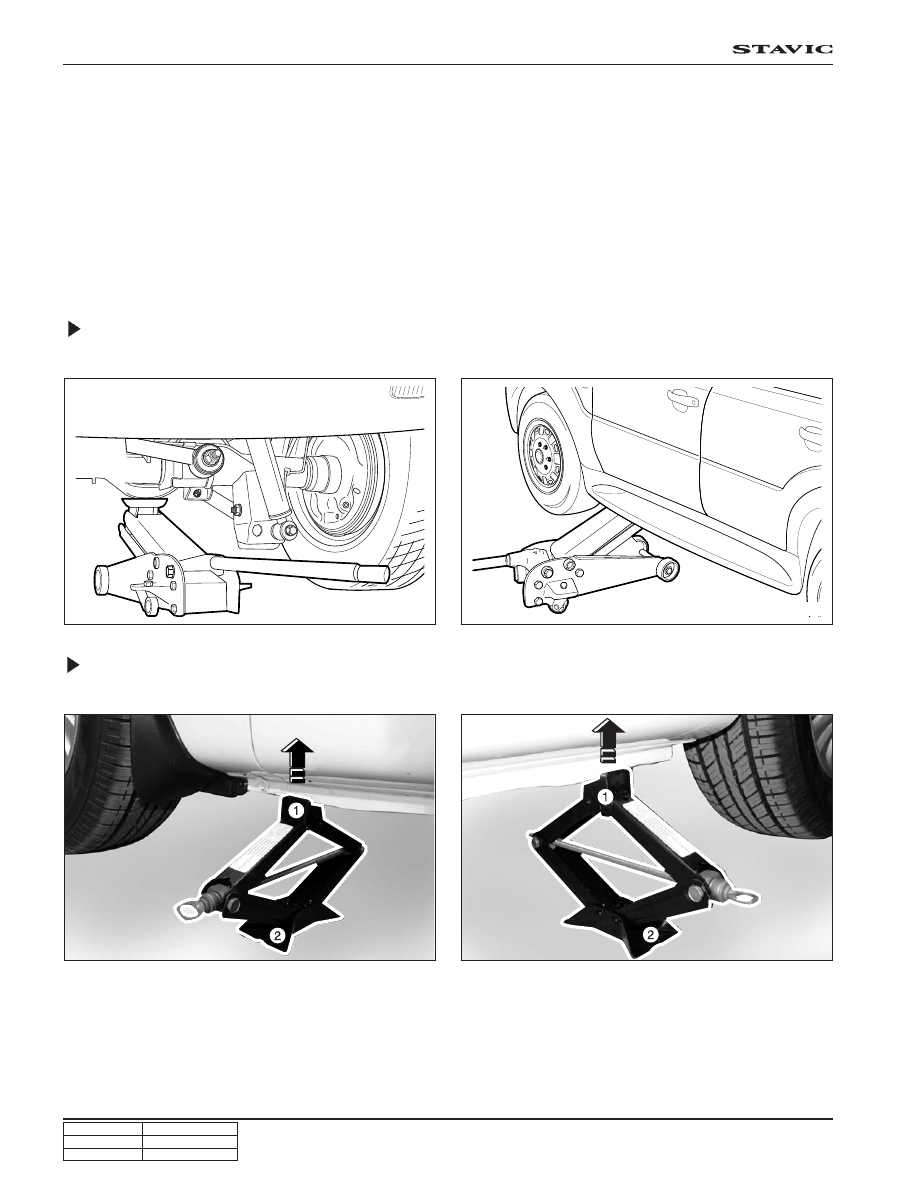SsangYong Stavic / SsangYong Rodius (2005 year). Service manual - part 73

DI0A-28
CHANGED BY
EFFECTIVE DATE
AFFECTED VIN
GENERAL INFORMATION
DI ENG SM - 2004.9
VEHICLE LIFTING PROCEDURES
To raise the vehicle, place the lifting equipment only at the
points indicated. Failure to use these precise positions
may result in permanent vehicle body deformation.
Many dealer service facilities and service stations are
equipped with automative hoists that bear upon some parts
of the frame in order to lift the vehicle. If any other hoist
method is used, take special care to avoid damaging the
fuel tank, the filter neck, the exhaust system, or the
underbody.
Using Floor Jack
Front Side
Rear Side
Front Jack Up Point
Using Jack
Rear Jack Up Point